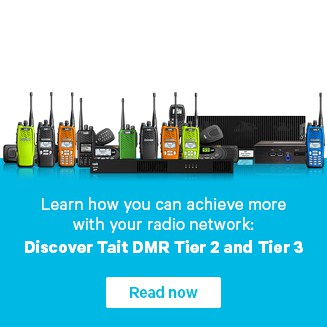Introduction to DMR
Call Types and Features
DMR Call Features
There are a number of features of DMR systems that are controlled centrally. DMR systems use two kinds of trunking, transmission-based trunking and message trunking. Transmission-based trunking means the call finishes when the PTT switch is released. When it’s pressed, a new channel is allocated for the call. Transmission-based trunking is used for group calls only.
In message based trunking, the same traffic channel stays live for the duration of the call, independent of PTT presses. Messaged based trunking can be used for group calls and individual calls. The advantage of message trunking is the security of maintaining the same channel resource. So consequently, a lot of emergency calls on systems are made using message based trunking.
An emergency call is the highest level of a group of calls called priority calls. Priority calls have a high level of access to the system than normal calls. A priority call will be given preferred access to a channel over a normal call. DMR systems are designed to optimize resources throughout the network. Two ways of doing this are through timing the call and queuing callers. If a system is busy, callers will be told to wait in a queue until the system becomes available. Each user can be assigned an area of operation. This is called a service area. It could be as small as one single site or it could be the full network.
At the network level, each individual user can be given certain call types they have access to. They may or may not be allowed to make group calls or individual calls or calls to telephone networks or a combination of all three. Some network access features are enabled in each subscriber unit. For example, access to conventional channels can be pre-programmed into these subscriber units. Some subscriber units can be allowed to make emergency calls or not.
Subscriber units can also be programmed to allow call diversion or call forwarding to other addresses. Call forwarding is a useful feature when the user’s subscriber unit is turned off. People calling that number will be diverted to an alternative such as a cell phone number or a desktop phone. These are a few of the optimization strategies that are employed in DMR networks.
 Radio Academy
Radio Academy





